THE TECH SET: Disturbing the Technological Peace
We’re all told it’s bad to be disruptive. Don’t disrupt class. Don’t disrupt meetings. Don’t disrupt bingo night at your grandmother’s retirement home. Anything we do to impede the predictable, stable progression of the status quo is seen as social mutiny. But sometimes, it pays to rock the boat.
Remember 8-bit video games? Three hundred pound TVs? Brick phones? The abacus? When it comes to technology, the old standards would stay… standard… if new innovations didn’t disrupt category norms and tempt the masses to change.
The thing about disruptive technologies is, at first, they don’t seem like a threat. They target fringe consumers—geeks, techies, nerds, disenfranchised juice bar workers. Not exactly your bread-and-butter sort of consumers. Then it happens: the mainstream catches on. The new technology matures and improves. And pretty soon, Sony ain’t sellin’ Discmans… because everyone’s buying iPods.
Who would have thought? Probably not Sony, back in 1998.
And that’s the point of this article: identifying the rabble-rousers before they make their move. Because, like it or not, the next tech revolution is just around the corner—and it’s never too early to pick sides. Viva la Revolucion! (raises eye-mounted HUD unit into the air, chants vociferously)
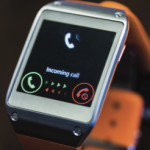 Smartwatches
Smartwatches
WHAT IT IS: A smartphone on your wrist.
WHY IT’S DISRUPTIVE: Once the technology matures, it has a chance to threaten the smartphone’s hegemony over the mobile communications market.
WHO TO WATCH: Pebble, Apple (maybe?)
The best part about being a rebel? You don’t have to worry about the disgruntled masses revolting. Yet.
Consider Pebble. Born of a wildly successful Kickstarter campaign, they’re a startup from Palo Alto that specializes in “Smartwatches.” No phones, no tablets, no dancing silhouette ad campaigns… just watches. Unlike the big guys, they don’t have to answer to millions of mainstream consumers who constantly demand newer, better mainstream products.
And that’s why they’re in a position to disrupt.
Right now, Pebble’s watches are little more than outboard displays for your smartphone—which has to be in your pocket, paired as a Bluetooth device. Cool? Yes. Essential? Groundbreaking? Neither. Certainly it’s a niche product, for a niche consumer. But that niche is expanding. And so is technology.
When they’re able to produce a watch that can do everything an iPhone can do (without the iPhone, of course), Pebble may just find itself catering to a mainstream audience. Think about it: would you buy a smartphone when you can have a classy-looking watch that does the same thing? All from your wrist?
But if Pebble does indeed manage to secure power, there will be challengers. Even now, there’s a new contender on the rise… it’s hands-free, it’s wrist-free and it could spell the end for every other “smart” device out there.
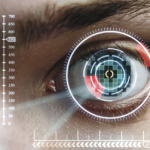 Ocular HUDs
Ocular HUDs
WHAT IT IS: A face-mounted display device that superimposes images directly over, or into, your eye.
WHY IT’S DISRUPTIVE: Paired with voice activation and cellular capability, it will be the ultimate expression of the wearable “smart” device.
WHO TO WATCH: Google, Innovega
Imagine: real-time directions, translations, info on the breeding habits of monitor lizards and selfies, all force-fed into your left eye… as you drive, walk, eat, watch TV or pretend to listen to your spouse.
Yes. This is the future.
The term HUD (Heads Up Display) refers to a projected image that’s superimposed over the forward field of vision. It’s a mainstay in the aviation industry, allowing pilots to see altitude, airspeed, weapons control and lots of other stuff without ever taking their eyes off the action.
Granted, you and I aren’t straining under g-forces or dodging surface-to-air missiles—but we still need information. Vital information. Like Facebook status updates and directions to the nearest cappuccino bar. And, like combat pilots on a mission, we can’t afford to waste a freakin’ second looking down.
Last year, Google claimed the first major breakthrough in the personal HUD category. They call it Google Glass—basically it’s a pair of glasses with a small, LED transparency that fits over one eye. About a centimeter from the pupil, even tiny blips appear as readable text and clear imagery. Certainly disruptive. Revolutionary? Not when you consider what Seattle-based startup Innovega has…
Unveiled at the Consumer Electronics Show (CES) this year, Innovega’s iOptik contact lens uses a 1mm-wide micro display diode that allows for six times the resolution of a glasses-based HUD. And this isn’t just a great idea—they really have these things, and they work. Paired with voice activation and cellular capability, the iOptik lens system will surely spell the end for smartphones, smartwatches and even smart glasses.
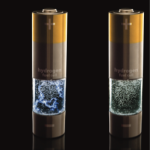 Personal Fuel Cells
Personal Fuel Cells
WHAT IT IS: A portable generator that creates electricity by chemically combining hydrogen and oxygen.
WHY IT’S DISRUPTIVE: It can provide cheap, off-the-grid power for every kind of electric/electronic device imaginable.
WHO TO WATCH: Intelligent Energy
What happens when you smoosh air and hydrogen together between electrically charged metals? Hydrogen combines with oxygen in the air to create water… which, as it so happens, leaves you with a few handy unclaimed electrons.
Or, in other words, usable electricity.
Fuel cell tech has been around since the ‘60s. And, like most technologies from the ‘60s, it was big, inefficient and only NASA could afford it. But thanks to companies like Intelligent Energy, that’s all changing. IE’s new “Upp” (sold through Brookstone) is a $200 mini fuel cell that can power your smartphone indefinitely without ever touching the municipal power supply. All you need to do is slap in a new hydrogen cartridge every now and then.
Yeah, okay, it’s charging a phone, not a city. And it’s not like most people have an issue with plugging their phone into a wall. But here’s the thing: Upp can charge your phone without any burning coal, goofy-looking windmills or nuclear meltdowns. And if it can charge a phone, pretty soon it can charge an appliance. Then a house. And eventually, an entire block of the Las Vegas strip.
No, Intelligent Energy won’t put Pacific Gas & Electric, Florida Power & Light or BP out of business anytime soon—but that may change. IE will soon be offering affordable power solutions in less developed areas that lack an established grid. And once IE’s technology proves it can develop the developing world, it might just be ready to give our grid a run for its money.
Just remember: it all started with a smartphone charger.
 Next-Gen Genomics
Next-Gen Genomics
WHAT IT IS: Making DNA as easy to program and manipulate as an iPhone app.
WHY IT’S DISRUPTIVE: Medicines as we know them will become obsolete—and eventually, so will we.
WHO TO WATCH: Ginkgo BioWorks, 23andMe
Yes. This is exactly what you think it is: an unassuming prelude to humanity’s untimely demise at the hands of genetically engineered flesh-eating mutants. But here’s the cruel irony: genetic science has the potential to radically improve our day-to-day lives before it…
Well, you know.
Ginkgo BioWorks, out of Boston, runs the world’s first fully operational “Organism Foundry.” Here, they compile genetic code like computer code, creating formulas that can express specific tissues, organs and even entire organisms. Much like a coder creates a game world for Halo, the folks at Ginkgo can literally program living things into existence, controlling and varying physical traits at will.
This means they can create fruit flies with legs sticking out of their heads and mice with bioluminescent eyes, all by tweaking DNA—no cutting and grafting necessary. It also means they can isolate the specific genes that predispose organisms (like humans) to birth defects and disease… and turn them off.
Yes, prescription drug industry—I said, “turn them off.”
As companies like Ginkgo Bioworks achieve greater measures of control over human chromosomes, they’ll be able to reduce, and effectively eliminate, disease before it starts. Whereas drugs today treat the effects of chronic diseases like asthma, Alzheimer’s and cancer, such conditions may never even manifest in the first place if we can master the intricacies of the human genome.
Bottom line: if today’s leading pharmaceutical companies don’t invest in genetic research, it’s young startups like Ginkgo that will surge to the forefront of modern medicine—not Pfizer and Merck. Beyond that, genetics will continue to reshape and redefine our understanding of what it means to be human… and life in general.
Just watch out for those mutants, though. No amount of gene therapy can save you from six-inch fangs and giant claws.
As a member of Seed’s copywriting team, Matt Donahue marries his love for creative writing with a keen interest in product innovation, technology and science. He’s a graduate of Seton Hill University’s “Popular Fiction” master’s program and writes whenever he can.
Feeling disruptive? Tell us about it! There’s always a new tech revolution on the horizon, and we’d love to get your take. Let’s get the conversation started—leave a comment or feel free to contact us any time.
P.S. You can follow Seed Strategy on our LinkedIn, Twitter, Facebook and Instagram pages.

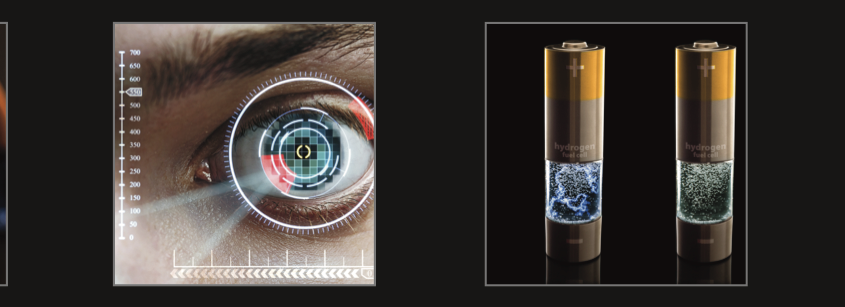






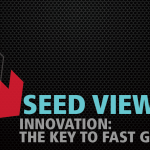

Item 3 is not “without any burning coal, goofy-looking windmills or nuclear meltdowns.” The hydrogen has to come from somewhere and that usually involves energy, so this may well be a coal-burning technology just like Tesla cars.